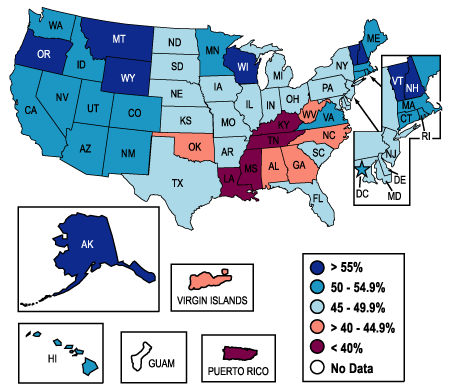Home l Contents l Executive Summary l Business Plan l HELP
Child Health Concerns
Modern children lead an increasingly sedentary life. Many diseases found only in adults are exploding in the youth population. These include: diabetes, obesity, hypertension, high blood pressure, depression and anxiety, and weak muscles and bones, all of which relate directly to the lack of a healthy lifestyle.
Children in poverty are especially at-risk. The problem is spreading around the world and effects millions of children. As these unhealthy children grow into unhealthy adults they will bankrupt an already strained healthcare infrastructure.
GOOGLE SEARCH: children, obesity, disease, health care costs, exercise, crisis,
Health Issues of an Overweight Population
Report by the Center for Disease Control (CDC)
Since the mid-seventies, the prevalence of overweight and obesity has increased sharply for both adults and children. Data from two NHANES surveys show that among adults aged 20-74 years the prevalence of obesity increased from 15.0% (in the 1976-1980 survey) to 32.9% (in the 2003-2004 survey).
The two surveys also show increases in overweight among children and teens. For children aged 2-5 years, the prevalence of overweight increased from 5.0% to 13.9%; for those aged 6-11 years, prevalence increased from 6.5% to 18.8%; and for those aged 12-19 years, prevalence increased from 5.0% to 17.4%.
These increasing rates raise concern because of their implications for Americans’ health. Being overweight or obese increases the risk of many diseases and health conditions, including the following:
Hypertension
Dyslipidemia (for example, high total cholesterol or high levels of triglycerides)
Type 2 diabetes
Coronary heart disease
Stroke
Gallbladder disease
Osteoarthritis
Sleep apnea and respiratory problems
Some cancers (endometrial, breast, and colon)
Although one of the national health objectives for the year 2010 is to reduce the prevalence of obesity among adults to less than 15%, current data indicate that the situation is worsening rather than improving.
This Center for Disease Control (CDC) map from 2005 displays the prevalence of people in each state meeting physical activity recommendations.

National Association for Sport and Physical Education (NASPE) recommendations
Here are the current activity recommendations for children, according to the National Association for Sport and Physical Education (NASPE)
Toddler
1 1/2 hours
30 minutes planned physical activity AND 60 minutes unstructured physical activity (free play)
Preschooler
2 hours
60 minutes planned physical activity AND 60 minutes unstructured physical activity (free play)
School age
1 hour or more
Break up into bouts of 15 minutes or more
It's also important to remember that young children should not be inactive for prolonged periods of time - no more than 1 hour unless they're sleeping. And school-age children should not be inactive for periods longer than 2 hours.
The USDA recommends the following for children:
- Engage in regular physical activity and reduce sedentary activities to promote health, psychological well-being, and a healthy body weight.
- To reduce the risk of chronic disease in adulthood: Engage in at least 30 minutes of moderate-intensity physical activity, above usual activity, at work or home on most days of the week.
- For most people, greater health benefits can be obtained by engaging in physical activity of more vigorous intensity or longer duration.
- To help manage body weight and prevent gradual, unhealthy body weight gain in adulthood: Engage in approximately 60 minutes of moderate- to vigorous-intensity activity on most days of the week while not exceeding caloric intake requirements.
- To sustain weight loss in adulthood: Participate in at least 60 to 90 minutes of daily moderate-intensity physical activity while not exceeding caloric intake requirements. Some people may need to consult with a healthcare provider before participating in this level of activity.
- Achieve physical fitness by including cardiovascular conditioning, stretching exercises for flexibility, and resistance exercises or calisthenics for muscle strength and endurance.
Economic Impact
According to a study of national costs attributed to both overweight (BMI 25-29.9) and obesity (BMI greater than 30), medical expenses accounted for 9.1 percent of total U.S. medical expenditures in 1998 and may have reached as high as $78.5 billion ($92.6 billion in 2002 dollars) (Finkelstein, Fiebelkorn, and Wang, 2003). Approximately half of these costs were paid by Medicaid and Medicare. The primary data sets used to develop the spending estimates for this study included the 1998 Medical Expenditure Panel Survey (MEPS) and the 1996 and 1997 National Health Interview Surveys (NHIS). The data also included information about each person’s health insurance status and sociodemographic characteristics.
